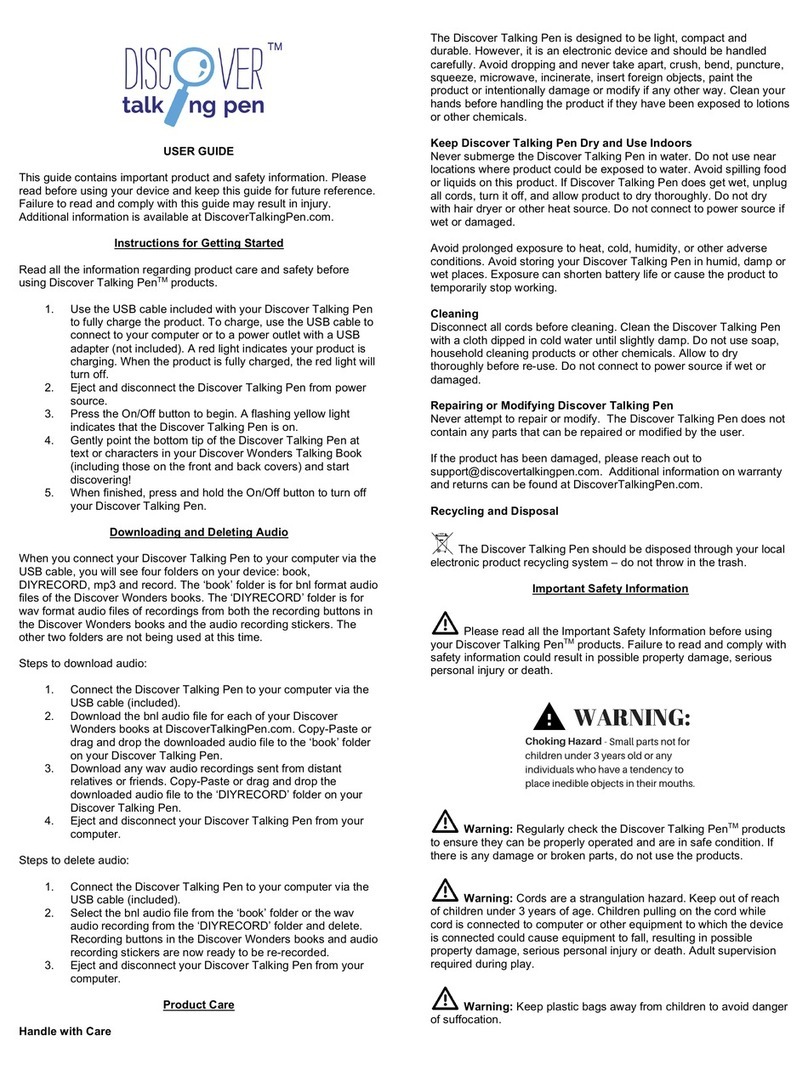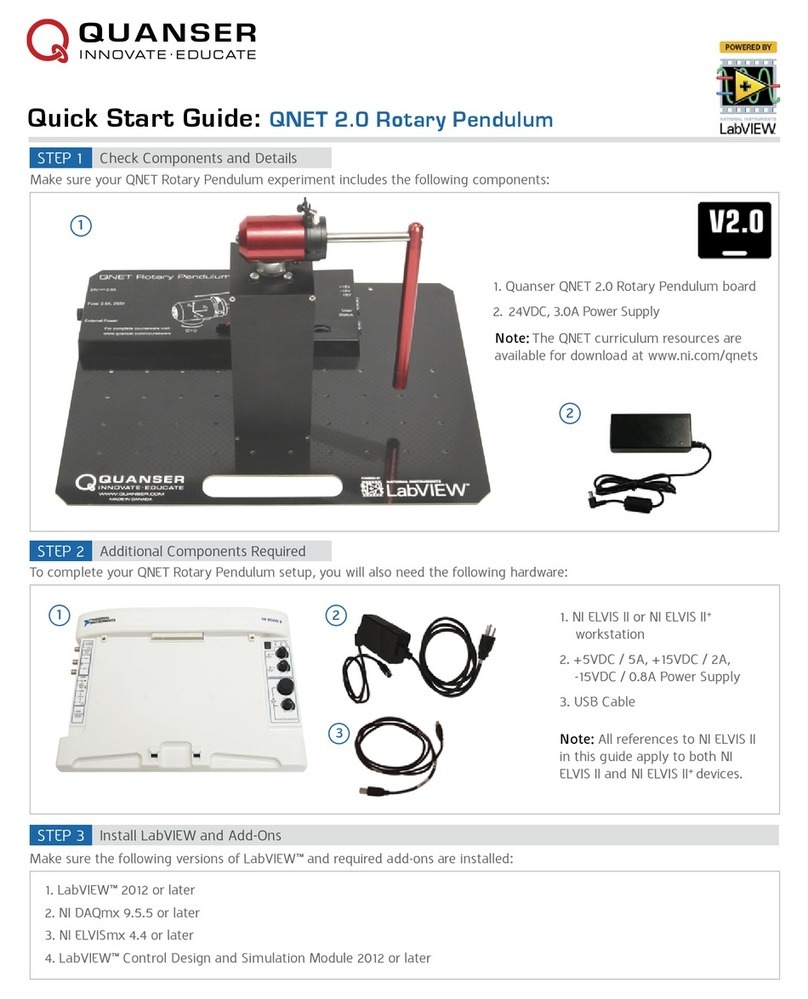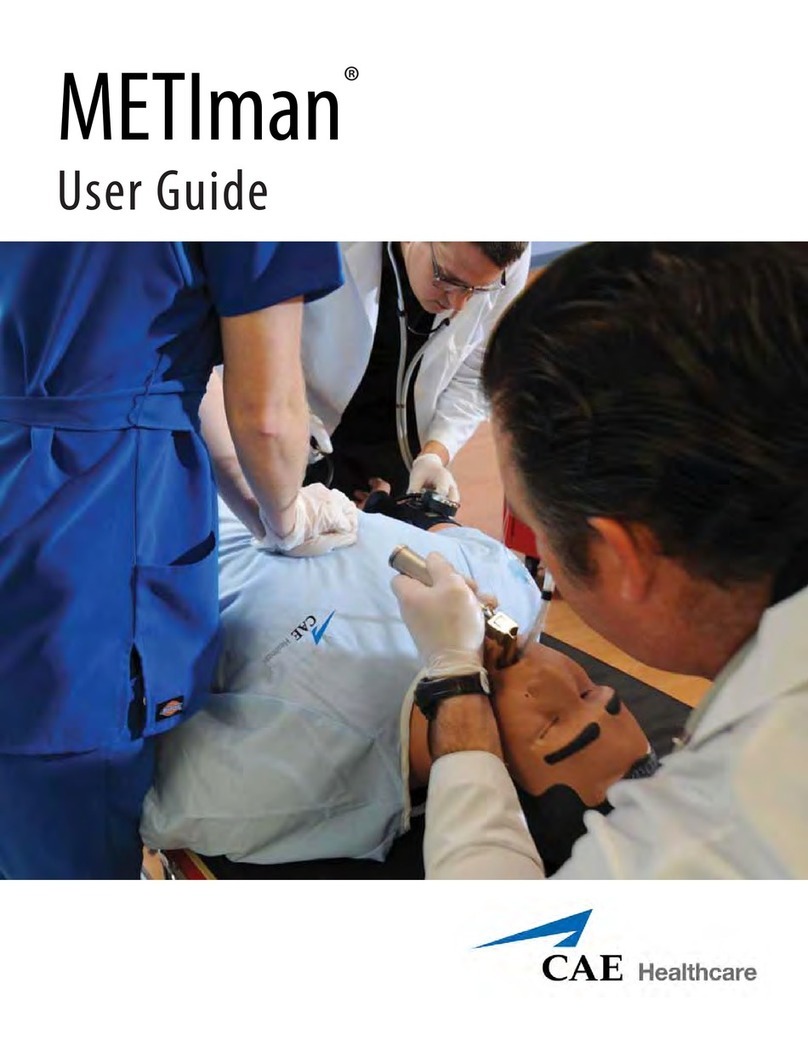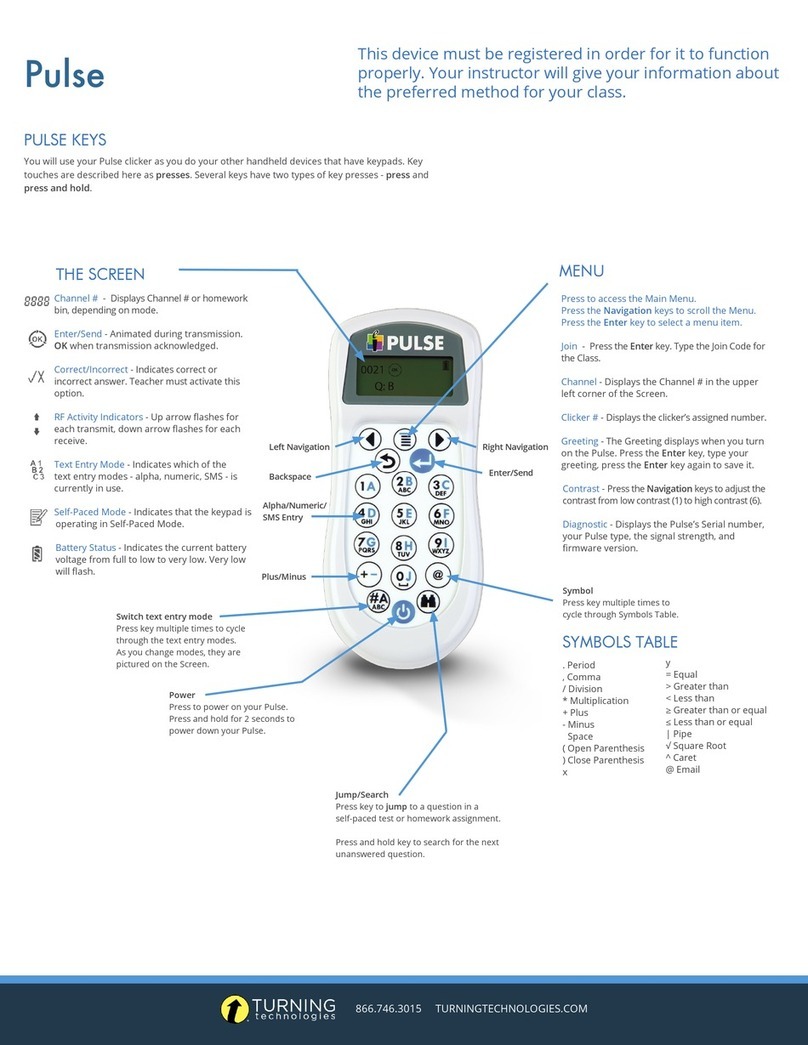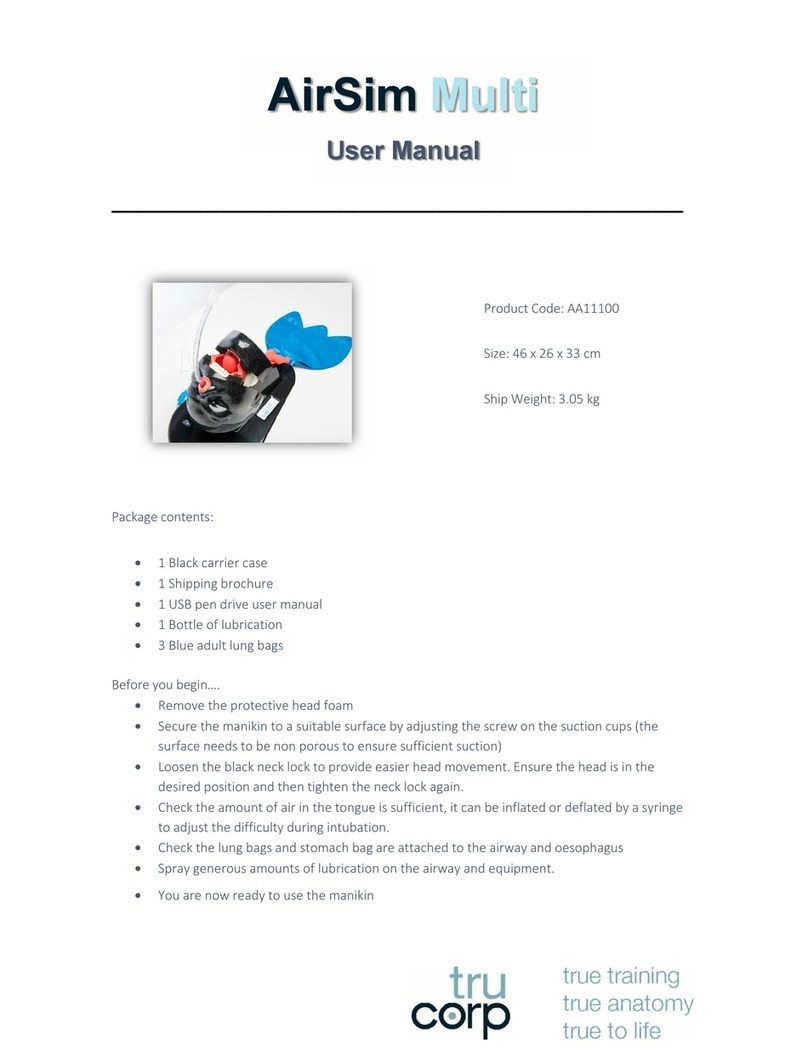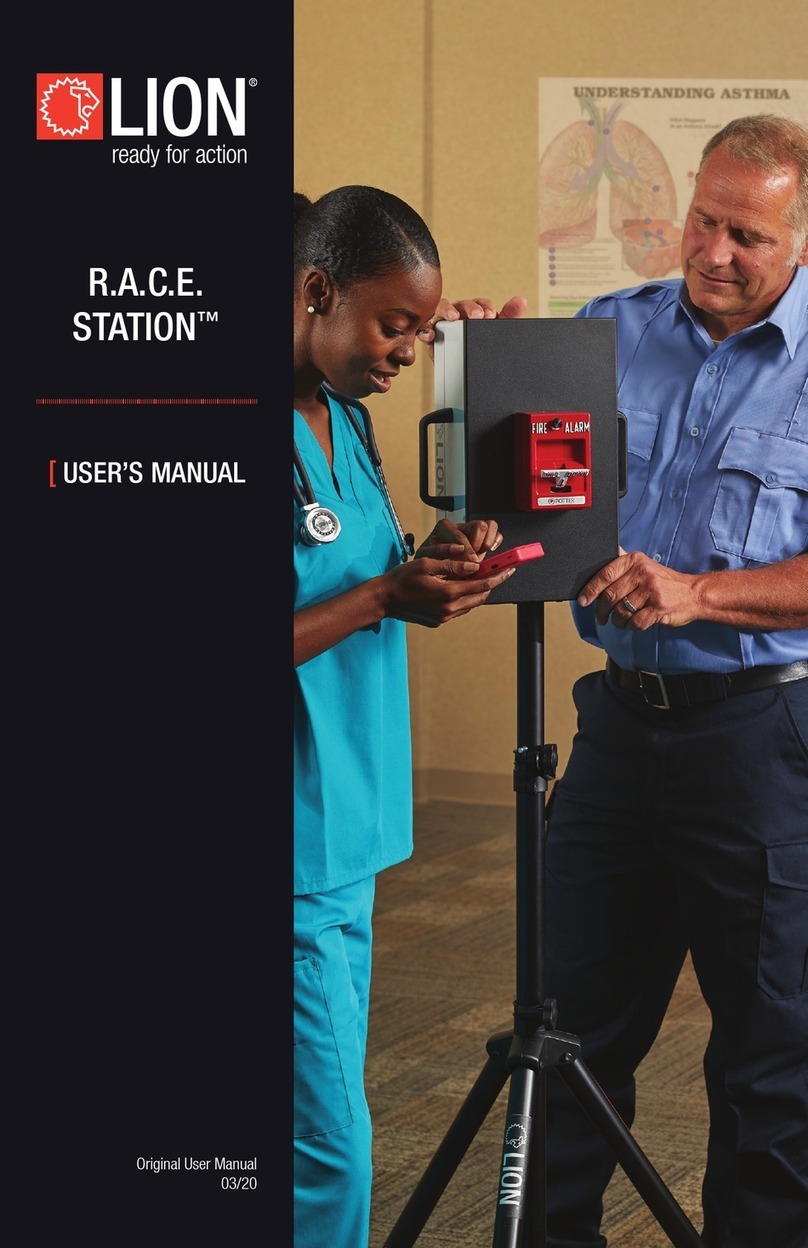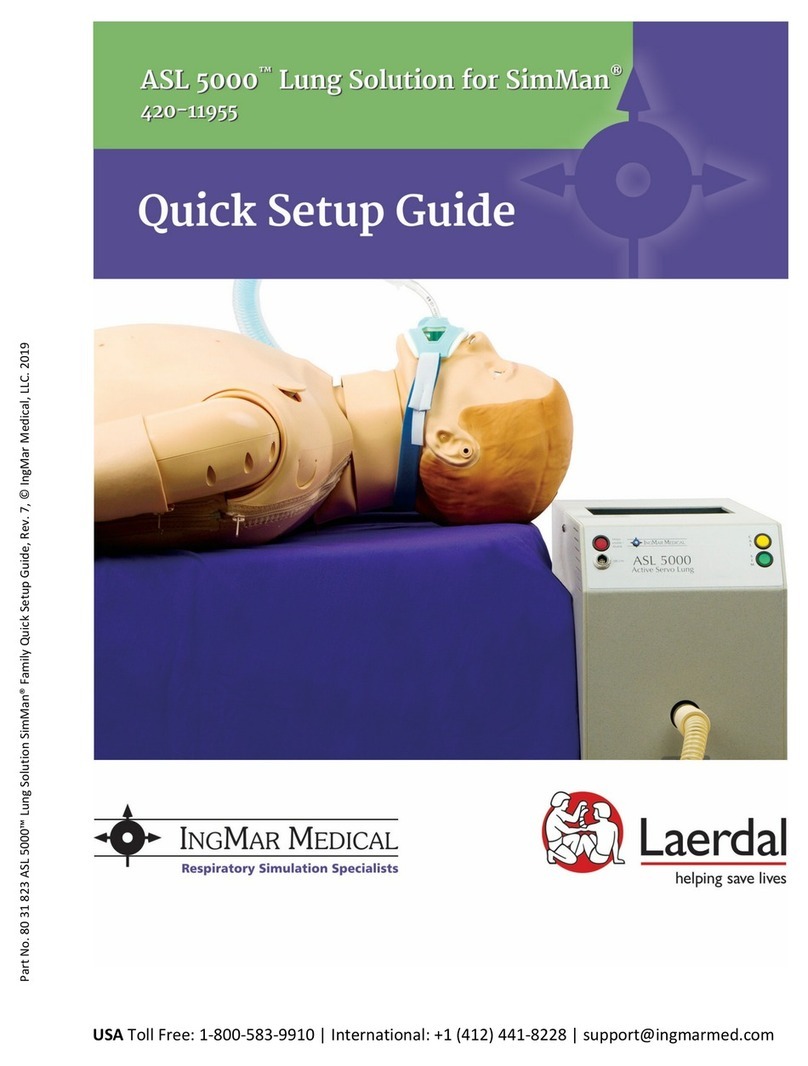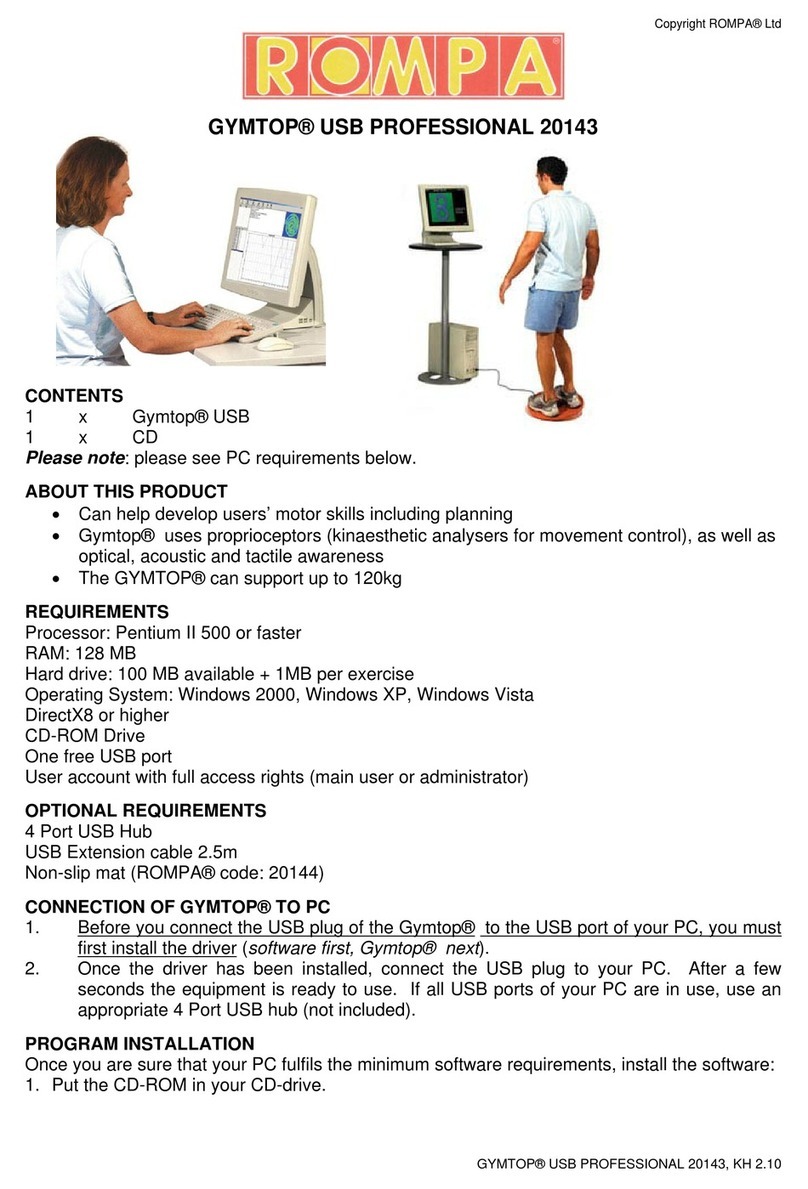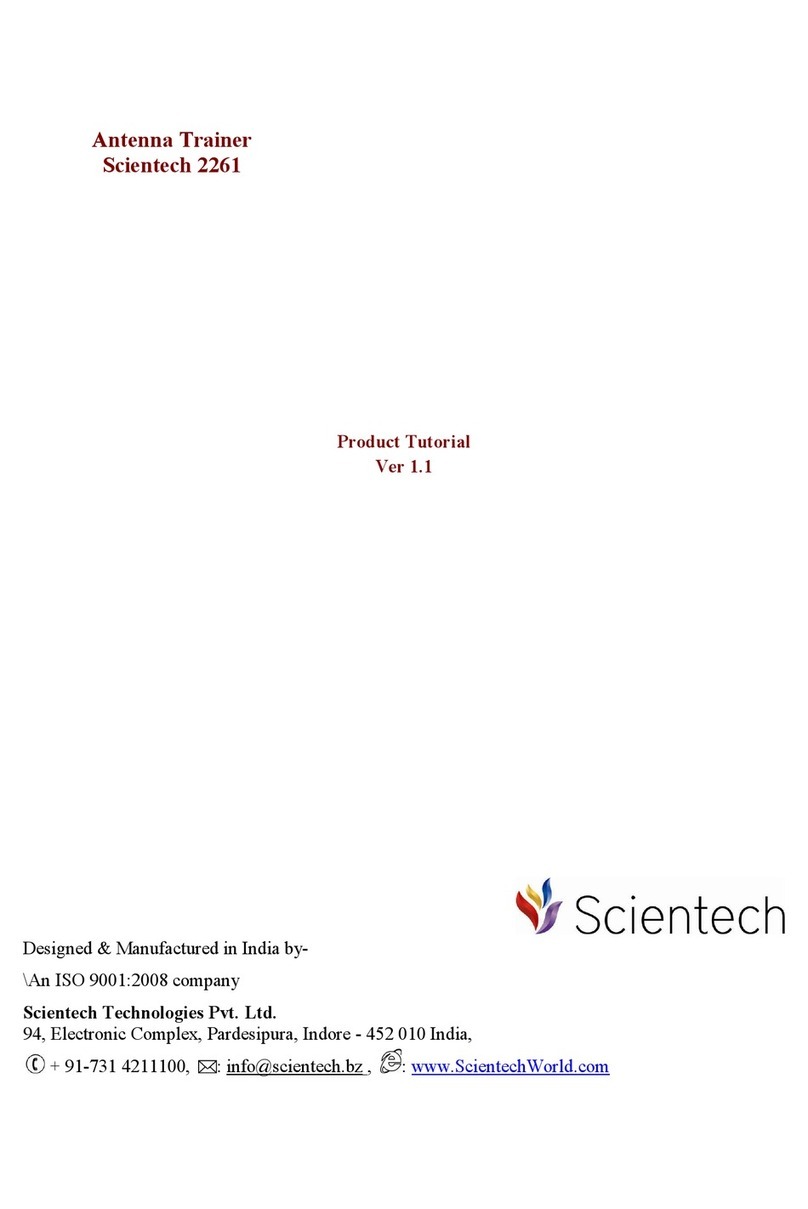crelando 304104 User manual

IAN 304104
Maletín de pinturas de bellas artes
Valigetta per dipingere e colorare
Künstler-Malkoffer
PT
Mala de pintura artística
IT MT
Valigetta per dipingere e
colorare
ES
Maletín de pinturas de bel-
las artes
GB MT
Artists‘ Paint Box
PTIT

2
Maletín de pinturas de bellas artes
ATENCIÓN!
¡POR FAVOR LEA LAS INSTRUCCIONES DE SEGURIDAD ANTES DE USAR!
¡SIGA LAS INSTRUCCIONES DE SEGURIDAD CUIDADOSAMENTE!
ESTE ARTÍCULO NO ES UN JUGUETE!
MANTENER FUERA DEL ALCANCE DE LOS NIÑOS.
Uso previsto
Sólo para uso privado. No apta para uso profesional.
Advertencias de seguridad
• Limpiarse las manos profundamente después de pintar.
• Evitar el contacto con los ojos. En caso de que entrara en contacto con los ojos, limpiar a consciencia durante
unos minutos bajo el agua. Si es necesario quítese las lentillas de la forma más suave posible.
• En caso de irritación persistente, acuda al médico.
• Procure que haya una ventilación de aire fresco suciente. En caso de molestias acuda al médico.
• En caso de irritación persistente de la piel, acuda al médico.
Instrucciones
Lea las siguientes instrucciones antes de empezar a pintar.
¡Atención! Las pinturas pueden dejar manchas difíciles. Lleve un mono o ropa vieja cuando pinte, y cubra el suelo y
los muebles.
Después de pintar, cierre bien los tubos.
Al pintar, asegúrese de tener suciente luz y espacio. La pintura debe secarse bien entre capa y capa, por eso debe
pintar en un área bien ventilada.
Pinturas acrílicas
• Las pinturas acrílicas se secan muy rápidamente. Cierre cuidadosamente los tubos después de cada uso.
• Lave siempre el pincel antes de aplicar un color diferente. Para evitar que el pincel mojado gotee sobre el
cuadro, séquelo a fondo con un poco de papel o un paño.
• Las pinturas acrílicas poseen una enorme capacidad de cobertura si se usan sin diluir o diluidas con poca
agua. Por tanto, puede volver a pintar algún área que ya se haya secado si no está satisfecho con el resultado.
• Las pinturas acrílicas son hidrosolubles y se pueden mezclar bien entre sí mientras aún estén húmedas. Las
pinturas acrílicas secas son impermeables y ya no se pueden usar para pintar. Por tanto, cierre bien los tubos
de pintura después de cada uso, y lave el pincel con agua abundante. Nunca deje que la pintura se seque
sobre el pincel o la paleta. La pintura acrílica seca inutiliza el pincel.
• Asegúrese de contar con luz y espacio suciente al pintar. El cuadro se debe secar después de cada paso, por
lo que es recomendable pintar únicamente en lugares con suciente ventilación.
Pinturas al óleo
• Limpie los pinceles después de cada uso. Comience metiéndolos en un recipiente con aguarrás o disolvente
de pintura, que eliminará la pintura sobrante.
• Presione el pincel suavemente arriba y abajo en el recipiente hasta que la pintura se desprenda del pincel.
• Retire el pincel. Limpie las cerdas con una solución jabonosa que equilibre el lípido, para que las cerdas sen-
sibles no se sequen y se hagan porosas.
• Seque el pincel con un paño seco. Coloque las cerdas en la forma original.
• Guarde los pinceles en un jarrón, con las cerdas hacia arriba y deje que se sequen.
Acuarelas
• Limpie sus pinceles después de cada uso. Limpie los pinceles con agua jabonosa templada.
• Seque el pincel con un paño seco. Coloque las cerdas en la forma original.
• Guarde los pinceles en un jarrón, con las cerdas hacia arriba y deje que se sequen.
Eliminación
El embalaje está compuesto por materiales no contaminantes que pueden ser desechados en el centro de reciclaje
local.
Para obtener información sobre las posibilidades de desecho del producto al nal de su vida útil, acuda a la
administración de su comunidad o ciudad.
Eliminación del envase
Elimine todo el material del envase respetando el medio ambiente.
ES

3
Valigetta per dipingere e colorare
ATTENZIONE!
LEGGERE LE ISTRUZIONI DI SICUREZZA PRIMA DELL’USO!
RISPETTARE LE ISTRUZIONI DI SICUREZZA!
QUESTO ARTICOLO NON È UN GIOCATTOLO!
TENERE LONTANO DALLA PORTATA DEI BAMBINI.
Modo d’uso
Solo per utilizzo privato. È vietato l’utilizzo commerciale.
Indicazioni di sicurezza
• Lavare sempre accuratamente le mani dopo avere dipinto.
• Evitare il contatto con gli occhi. In caso di contatto con gli occhi: lavare con cautela per alcuni minuti con acqua
corrente. Rimuovere eventualmente le lenti a contatto, se possibile senza problemi.
• In caso di irritazione persistente, consultare un medico.
• Ventilare abbondantemente con aria fresca! In caso di disturbi, consultare un medico.
• In caso di irritazione cutanea permanente, consultare un medico.
Avvertenze
Leggere attentamente le seguenti istruzioni prima di iniziare a dipingere.
Attenzione! I colori possono lasciare macchie ostinate. Durante la pittura, indossare un grembiule o abiti vecchi e
coprire il pavimento e i mobili!
Dopo la pittura, chiudere saldamente il tubetto al termine di ogni uso.
Durante la pittura, assicurarsi di avere abbastanza luce e spazio. Ogni strato di colore del disegno deve asciugarsi
completamente; è necessario quindi disegnare solo in un luogo ben ventilato.
Colori acrilici
• I colori acrilici si asciugano molto rapidamente. Dopo l’utilizzo chiudere accuratamente i tubetti dei colori.
• Lavare bene il pennello prima di utilizzarlo per un altro colore. Per evitare che dal cappuccio del pennello gocce
d’acqua macchino il disegno, asciugare sempre bene il pennello con un pezzo di carta o un panno.
• I colori acrilici sono molto coprenti se utilizzati non diluiti o diluiti con poca acqua. Dopo l’asciugatura è quindi
possibile ripassare su parti del disegno se non si è soddisfatti del risultato.
• I colori acrilici si sciolgono in acqua e possono essere mescolati no a quando sono bagnati. I colori acrilici
asciutti sono invece resistenti all’acqua e non possono essere riutilizzati per la pittura. Dopo ogni utilizzo,
chiudere quindi bene il tubetto e lavare il pennello con abbondante acqua. Non lasciare mai asciugare il colore
sul pennello o sulla tavolozza dei colori! I colori acrilici seccati sul pennello lo rendono inservibile.
• Accertarsi di avere luce e posto a sufcienza prima di iniziare a dipingere. Dopo ogni passata, il quadro deve
asciugare completamente, dipingere solo in locali sufcientemente aerati.
Colori ad olio
• Pulire i pennelli dopo ogni uso. Iniziare immergendo i pennelli in un barattolo di trementina o di altri solventi, in
modo da rimuovere gran parte del colore in eccesso.
• Spingere delicatamente il pennello su e giù nel barattolo no a quando il colore inizia a sollevarsi dal pennello.
• Rimuovere il pennello. Pulire le setole con del sapone idratante in modo che le setole delicate non si secchino
e diventino porose.
• Asciugare il pennello con un panno asciutto. Riportare le setole alla loro forma originale.
• Conservare i pennelli in un barattolo, rivolti verso l’alto, e lasciarli asciugare.
Colori ad acquerello
• Pulire i pennelli dopo ogni uso. Pulire i pennelli con sapone idratante e acqua tiepida.
• Asciugare il pennello con un panno asciutto. Riportare le setole alla loro forma originale.
• Conservare i pennelli in un barattolo, rivolti verso l’alto, e lasciarli asciugare.
Smaltimento
L’imballaggio è composto da materiali ecologici che possono essere smaltiti presso i siti di raccolta locali per il riciclo.
E’ possibile informarsi circa le possibilità di smaltimento del prodotto usato presso l’amministrazione comunale o
cittadina.
Smaltimento dell’imballaggio
Smaltire tutti i materiali dell’imballaggio in modo ecologicamente conforme.
IT MT

4
Mala de pintura artística
ATENÇÃO!
ANTES DE UTILIZAR LEIA AS INSTRUÇÕES DE SEGURANÇA!
TENHA O CUIDADO DE SEGUIR AS INSTRUÇÕES DE SEGURANÇA!
ESTE PRODUTO NÃO É UM BRINQUEDO!
MANTENHA FORA DO ALCANCE DAS CRIANÇAS.
Utilização adequada
Apenas para uso privado. Não se destina ao uso comercial.
Indicações de segurança
• Limpe bem as mãos depois de pintar.
• Evite o contacto com os olhos. Em caso de contacto com os olhos: limpe os olhos cuidadosamente sob água
corrente durante alguns minutos. Retire eventuais lentes de contacto, desde que seja fácil retirá-las.
• Se a irritação persistir consulte um médico.
• Assegure uma ventilação suciente! Em caso de dores consulte um médico.
• Se a irritação da pele persistir consulte um médico.
Notas
Antes de começar a pintar, leia as indicações em baixo.
Aviso! As tintas podem deixar manchas persistentes. Quando pintar, vista um fato-de-macaco ou roupas velhas, e
cubra o chão e os móveis!
Depois de pintar, feche bem os tubos Depois de cada utilização.
Quando pintar, certique-se de que tem luz e espaço sucientes. A imagem deve secar completamente entre cada
camada de tinta; deverá portanto pintar apenas num local bem ventilado.
Tintas acrílicas
• As tintas acrílicas secam muito rapidamente. Após cada utilização, feche bem os tubos.
• Lave bem o pincel, antes de colocar uma nova tinta. Para evitar que caiam gotas de água do pincel para o
quadro, seque bem o pincel com um pedaço de papel ou um pano.
• As tintas acrílicas possuem um elevado grau de opacidade, se forem utilizadas em estado puro ou com muito
pouca água. Por isso, pode voltar a pintar zonas individuais após terem secado, caso não que satisfeito com
o resultado.
• As tintas acrílicas são solúveis em água e podem ser misturadas entre si muito facilmente, mas apenas en-
quanto estão húmidas. As tintas acrílicas secas são resistentes à água e não podem voltar a ser usadas para
pintar. Por este motivo, após cada utilização, feche bem o tubo e lave os pincéis com água abundante. Nunca
deixe secar a tinta no pincel ou na palete de mistura! As tintas acrílicas secas inutilizam o pincel.
• Certique-se de que dispõe de luz e de espaço suciente para pintar. O quadro tem de secar bem após cada
demão, por isso pinte em locais que possam ser sucientemente arejados.
Tintas de óleo
• Limpe os seus pincéis depois de cada utilização. Comece por mergulhar os pincéis num frasco de terebintina
ou diluente, que vai tirar grande parte do excesso de tinta.
• Mova o pincel suavemente para cima e para baixo no frasco até a tinta começar a sair do pincel.
• Remova o pincel. Limpe as cerdas com um sabão biológico de equilíbrio lipídico, para que as cerdas sensíveis
não sequem e quem porosas.
• Limpe o pincel com um pano seco. Reponha as cerdas para a sua forma original.
• Guarde os pincéis num frasco com as cerdas para cima, deixe secar.
Aguarelas
• Limpe os seus pincéis depois de cada utilização. Limpe o pincel com sabão biológico e água morna.
• Limpe o pincel com um pano seco. Reponha as cerdas para a sua forma original.
• Guarde os pincéis num frasco com as cerdas para cima, deixe secar.
Eliminação
A embalagem é feita de materiais não poluentes que podem ser eliminados nos contentores de reciclagem locais.
As possibilidades de reciclagem dos artigos utilizados poderão ser averiguadas no seu Município ou Câmara
Municipal.
Eliminar a embalagem
Elimine todos os materiais da embalagem de modo ecológico.
PT

5
Artists’ Paint Box
ATTENTION!
PRIOR TO USE PLEASE READ THE SAFETY INSTRUCTIONS!
PLEASE TAKE CARE TO FOLLOW THE SAFETY INSTRUCTIONS!
THIS PRODUCT IS NOT A TOY!
KEEP OUT OF REACH OF CHILDREN.
Intended use:
Only for private use. Not for commercial use.
Safety instructions
• Clean your hands thoroughly after painting.
• Avoid contact with the eyes. Following contact with the eyes: rinse carefully under running water for several
minutes. Remove contact lenses if they can be removed easily.
• If irritation continues: consult your doctor.
• Paint in a well-ventilated place! If health problems occur, consult your doctor.
• In the event of ongoing skin irritation, consult your doctor.
Tips
Please read the following tips before you begin painting.
Warning! Paints can leave stubborn stains. When painting, wear an overall or old clothes, and cover the oor and
furniture!
After painting, close the tubes tightly after each use.
When painting, make sure that you have enough light and space. The picture must dry thoroughly between each
layer of paint; you should therefore only paint in a well ventilated place.
Acrylic paint
• Acrylic paints dry very quickly. Close the tubes carefully after each use.
• Always wash your brush before applying a new colour. To avoid dripping water from the paintbrush onto the
picture, dry the brush thoroughly with some absorbent paper or a cloth.
• Acrylic paints have high coverage when used either neat or diluted with a little water. You can therefore repaint
areas after they have dried, if you are dissatised with the result.
• Acrylic paints are water soluble and mix well before they have dried. Dried acrylic paint is waterproof and
cannot be used for painting. Close the tubes tightly after each use, and rinse the paintbrush with plenty of
water. Never let paints dry on the brush or the palette! Dried acrylic paint will ruin the brush.
• When painting, make sure that you have enough light and space. The picture must dry
thoroughly between each layer of paint; you should therefore only paint in a well-ventilated place.
Oil paint
• Clean your brushes after each use. Start by dipping the brushes into a jar of turpentine or paint thinner, which
will take off much of the excess paint.
• Gentle push the brush up and down in the jar until the paint starts to lift from the brush.
• Remove the brush. Clean the bristles with a lipid balancing curd soap, so that the sensitive bristles do not dry
out and get porous.
• Strip the brush with dry cloth. Bring the bristles in the original shape.
• Store the brushes in a jar, bristles up, let it dry.
Water paint
• Clean your brushes after each use. Clean the brush with curd soap and lukewarm water.
• Strip the brush with dry cloth. Bring the bristles in the original shape.
• Store the brushes in a jar, bristles up, let it dry.
Disposal
The packaging is made entirely of recyclable materials, which you may dispose of at local recycling facilities.
Contact your local refuse disposal authority for more details of how to dispose of your worn-out product.
Disposing of the packaging
Dispose of all packaging components in an environmentally friendly manner.
GB MT

6
Künstler-Malkoffer
ACHTUNG!
VOR GEBRAUCH DIE SICHERHEITSHINWEISE LESEN!
ANLEITUNG SORGFÄLTIG AUFBEWAHREN!
DIESER ARTIKEL IST KEIN SPIELZEUG!
NICHT IN DIE HÄNDE VON KINDERN KOMMEN LASSEN.
Bestimmungsgemäße Verwendung
Nur zur privaten Nutzung. Nicht für den gewerblichen Einsatz.
Sicherheitshinweise
• Hände nach dem Malen gründlich waschen.
• Kontakt mit Augen vermeiden. Bei Berührung mit den Augen: Einige Minuten lang vorsichtig unter ießendem
Wasser ausspülen. Evtl. vorhandene Kontaktlinsen entfernen, sofern leicht möglich.
• Bei anhaltender Reizung: ärztlichen Rat einholen.
• Sorgen Sie für reichlich Frischluftzufuhr! Bei Beschwerden ärztlichen Rat einholen.
• Bei andauernder Hautreizung Arzt aufsuchen.
Hinweise
Lesen Sie die folgenden Hinweise, bevor Sie mit dem Malen beginnen.
Achtung! Die Farben können hartnäckige Flecken hinterlassen. Beim Malen eine Schürze oder ausrangierte Kleidung
tragen und Boden und Möbel abdecken!
Bitte die Tuben nach jedem Gebrauch sorgfältig verschließen.
Sorgen Sie dafür, dass Sie beim Malen ausreichend Licht und Platz haben. Das Bild muss nach jeder Malstufe
gründlich trocknen, malen Sie daher nur in Räumen, die ausreichend gelüftet werden können.
Acrylfarben
• Acrylfarben trocknen sehr schnell. Bitte die Tuben nach jedem Gebrauch sorgfältig verschließen.
• Waschen Sie den Pinsel immer aus, bevor Sie eine neue Farbe auftragen. Um zu verhindern, dass
Wassertropfen aus der Pinselhülse auf das Bild tropfen, trocknen Sie den Pinsel mit einem Stück Papier oder
einem Tuch gründlich ab.
• Acrylfarben besitzen eine hohe Deckkraft, wenn sie unverdünnt oder mit wenig Wasser verdünnt aufgetragen
werden. Sie können daher einzelne Bereiche nach dem Trocknen wieder übermalen, wenn Sie mit dem
Ergebnis nicht zufrieden sind.
• Acrylfarben sind wasserlöslich und lassen sich untereinander gut mischen, allerdings nur solange sie noch
feucht sind. Getrocknete Acrylfarben sind wasserfest und können nicht mehr zum Malen verwendet werden.
Schrauben Sie daher nach jedem Gebrauch die Farbtuben fest zu, und spülen Sie die Pinsel mit reichlich
Wasser aus. Farbe nie auf dem Pinsel oder der Mischpalette trocknen lassen! GetrockneteAcrylfarbe macht
Pinsel unbrauchbar.
• Sorgen Sie dafür, dass Sie beim Malen ausreichend Licht und Platz haben. Das Bild muss nach jeder Malstufe
gründlich trocknen, malen Sie daher nur in Räumen, die ausreichend gelüftet werden können.
Ölfarben
• Reinigen Sie Ihre Pinsel nach jedem Gebrauch. Tauchen Sie hierzu den Pinsel in einen Behälter mit Terpentin
oder Farbverdünner, um die überschüssige Farbe zu entfernen.
• Bewegen Sie den Pinsel im Behälter auf und ab bis Sie sehen, dass sich die Farbe langsam vom Pinsel löst.
• Entnehmen Sie den Pinsel aus dem Behälter. Reinigen Sie nun den Pinsel mit einer rückfettenden Kernseife,
damit die empndlichen Pinselhaare nicht austrocknen und porös werden.
• Streifen Sie den Pinsel mit einem trocknen Tuch ab. Bringen Sie dabei die Pinselhaare in ihre ursprüngliche
Form.
• Der Pinsel kann nun mit den Pinselhaaren noch oben gerichtet in einen Behälter trocknen.
Aquarellfarben
• Reinigen Sie Ihre Pinsel nach jedem Gebrauch. Säubern Sie den Pinsel mit Kernseife und lauwarmes Wasser.
• Streifen Sie den Pinsel mit einem weichen Tuch ab. Bringen Sie dabei die Pinselhaare in ihre ursprüngliche
Form.
• Der Pinsel kann nun mit den Pinselhaaren noch oben gerichtet in einen Behälter trocknen.
Entsorgung
Die Verpackung besteht aus umweltfreundlichen Materialien, die Sie über die örtlichen Recyclingstellen entsorgen
können.
Möglichkeiten zur Entsorgung des ausgedienten Produkts erfahren Sie bei Ihrer Gemeinde- oder Stadtverwaltung.
Verpackung entsorgen
Führen Sie alle Verpackungsmaterialien einer umweltgerechten Entsorgung zu.
DE AT CH

7
IAN 304104 5
OWIM GmbH & Co. KG
Stiftsbergstraße 1
DE-74167 Neckarsulm
GERMANY
Model No.: HG01035
Version: 07/2018
Table of contents
Languages:
Popular Educational Equipment manuals by other brands
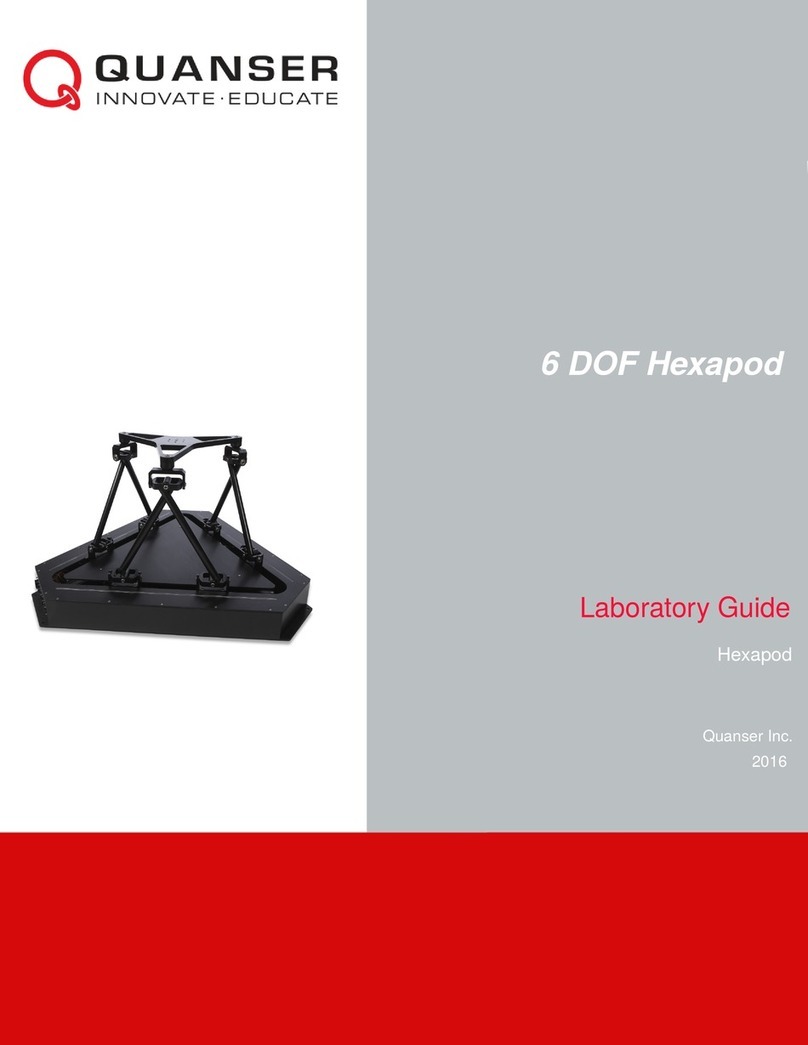
Quanser
Quanser 6 DOF Hexapod Laboratory guide

Surefire
Surefire Flying Model Rocket Kit How to use
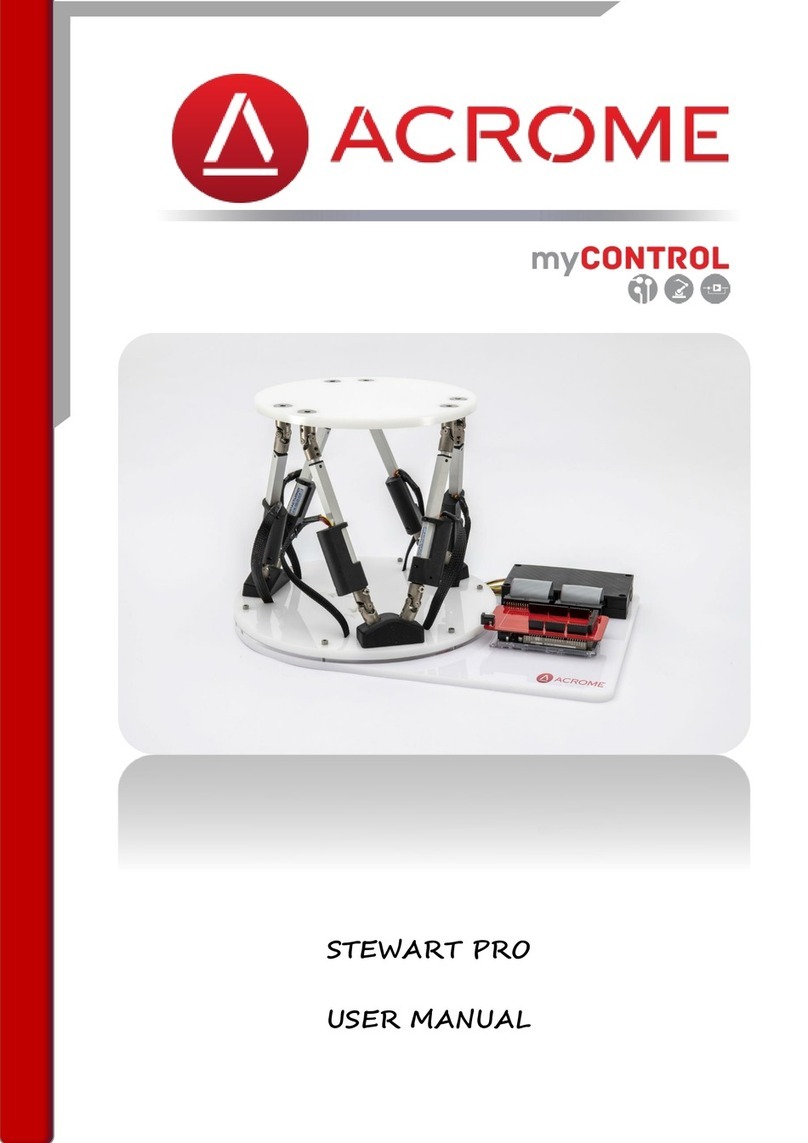
ACROME
ACROME myCONTROL STEWART PRO user manual
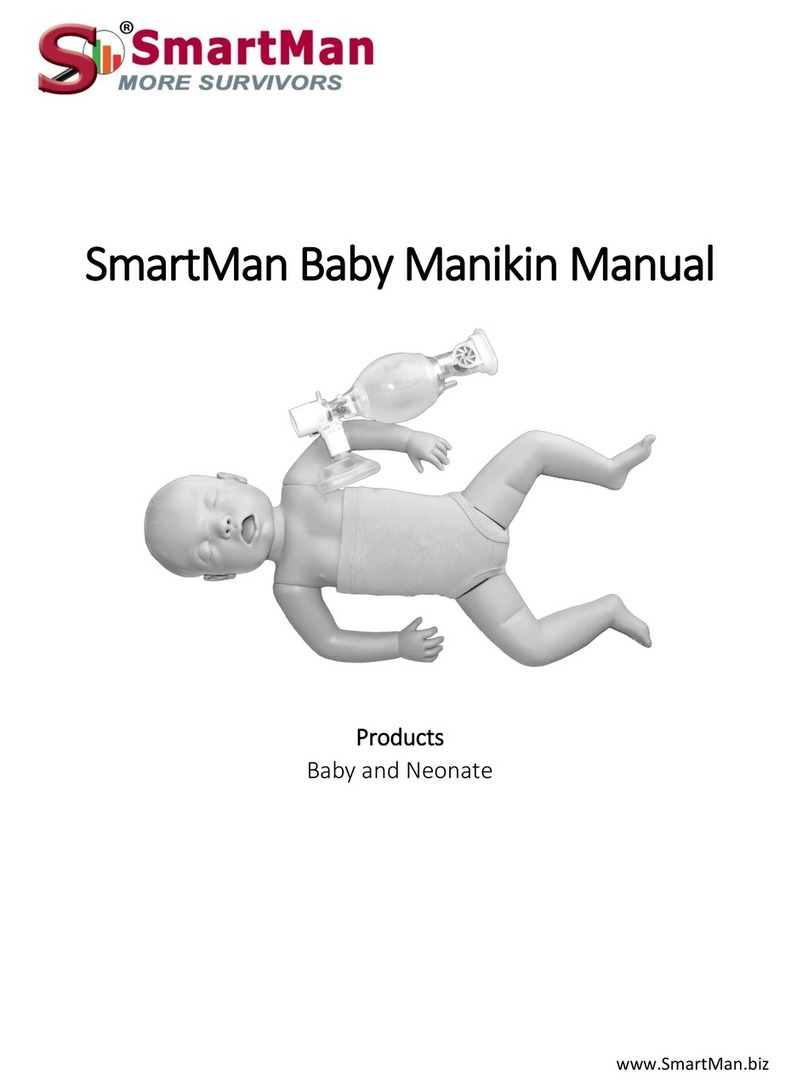
SmartMan
SmartMan Baby Manikin manual
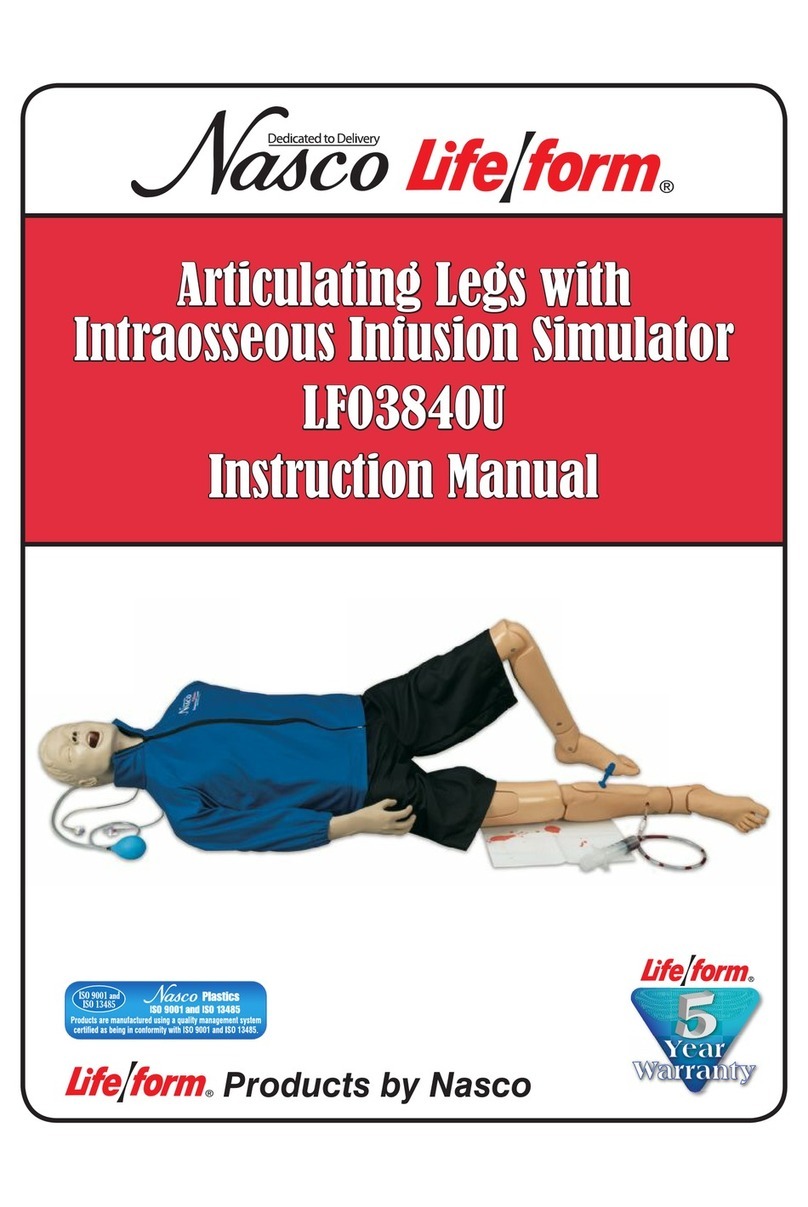
Nasco
Nasco Life/form LF03840U instruction manual

Pitsco Education
Pitsco Education BUILDERSPACES SPACEPORT Assembly instructions
